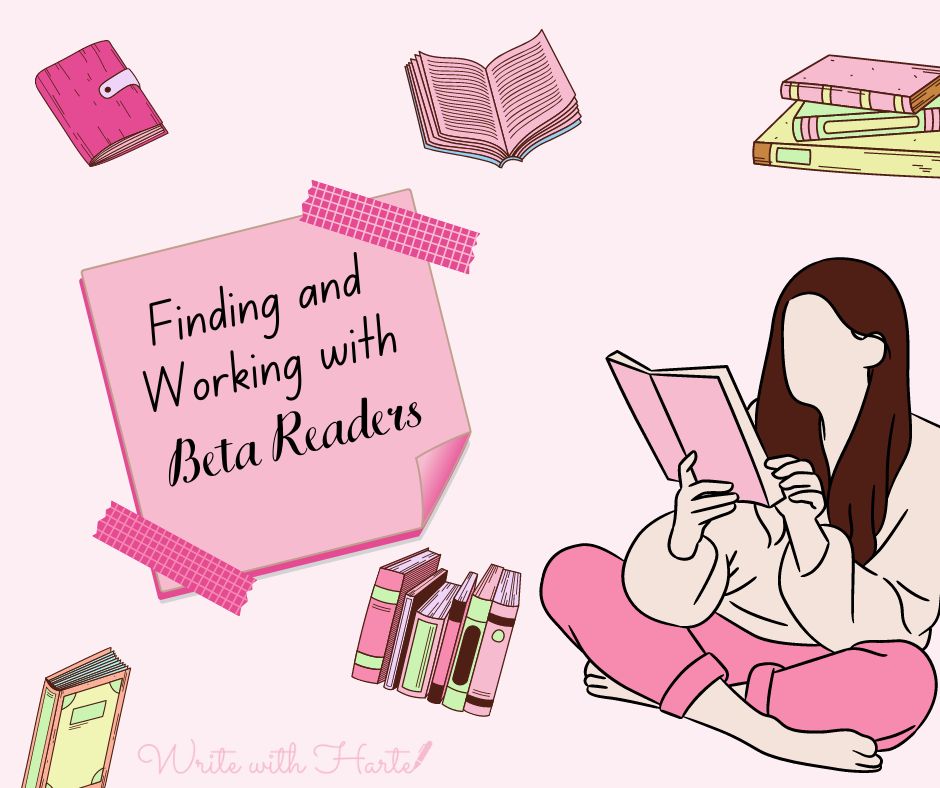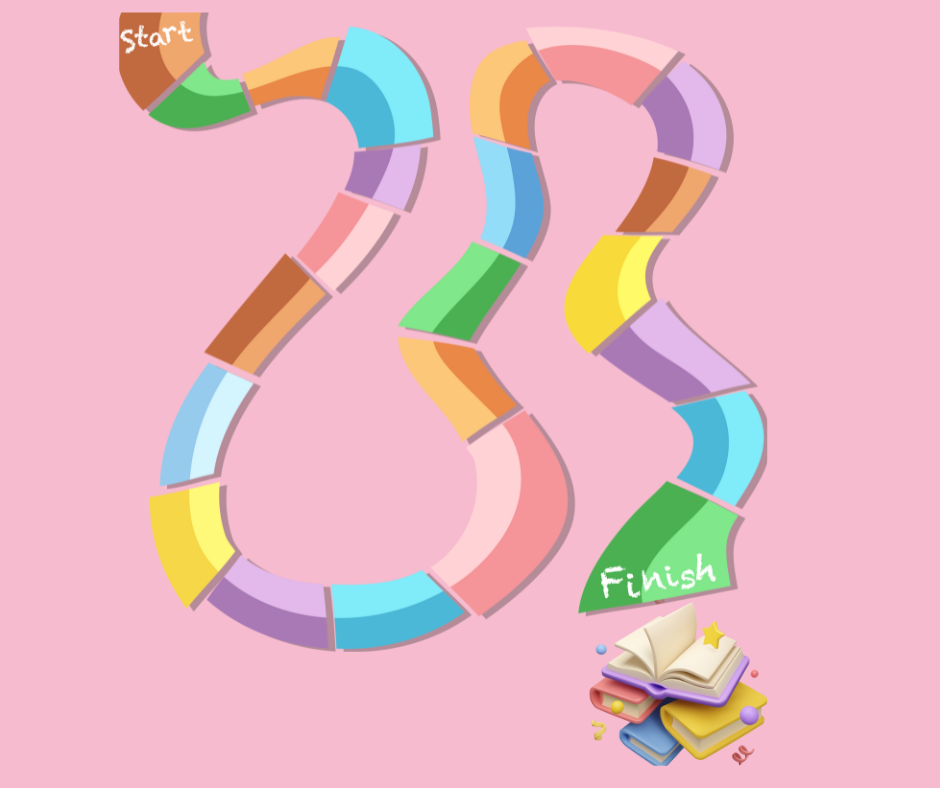Finding and Working with Beta Readers: A Guide for Romance Authors

Beta readers are one of those recommendations other authors make, but often there is little information in how to find or work with a beta reader. While there is a great deal of leeway in cultivating beta readers, here are general tips and guidelines that you can use or tweak to fit your needs.
Text version of this video is below.
What is a Beta Reader?
The term “beta” comes from beta test in the software world in which a program nearing completion would be tested for bugs by outside sources before being given to the masses. Today, beta testing occurs with software, apps, gizmos, gadgets, products, and now books.
A beta reader reads a manuscript that is nearly complete to find issues in plot, pacing, characters, inconsistencies, spelling and grammar, and formatting, before the manuscript is sent to an editor. Beta readers differ from editors in that they’re experiencing the book as a reader would and only highlighting issues that get in the way of the reading experience. While some beta readers are also ARC readers (readers who get an advanced copy for review), the two are different.
While you can hire beta readers, for the most part, authors have readers who do it for free. Why? Because they love your work and want to be a part of the process. Because they want to read the story now, not later. Because they want to read for free. Because they enjoy helping authors. Beta readers read for all sorts of reasons.
You don’t need a gaggle of readers. Too many readers make it difficult to review all the feedback. Three is a good number…it’s enough to get a variety of insights without being overwhelming. With that said, you may want a team of readers (5-7) them so you have at least 3 readers available when needed or to have 3 feedbacks in case someone can’t read in time.
Preparing Your Romance Novel for Beta Readers
The beta readers are your last round of eyes before the novel goes to your editor (whether you’re an indie or traditional published author). The goal is to give them the complete reading experience. Here are tips for prepping your book for beta readers:
- Finish the book. Don’t send them a draft. Use drafts in your critique group or for alpha readers.
- Put together a short tag line or premise and blurb that you’ll use to let your readers know what the book is about so they can decide if they want to read it.
- Format the book. How you do this depends on how much you want your readers to be able to comment or mark up the manuscript and how they prefer to read. You can deliver a Word or Google Doc which your readers can mark up. Or you can send a PDF (there is an option to comment in PDFs). Another option is Epub, which is ideal for readers who like to read on Kindle or other e-reader.
Establishing Beta Reader Guidelines
Before you send off your manuscript, you should establish a process by which you want your readers to work with you. Here are some guidelines to set up:
- Expectations. What do you want your readers to let you know about? What sort of feedback are you looking for? If there are specific areas of concern, let them know about it. For example, if you think a character is too weak or a plot twist isn’t twisty enough.
- Time frame. You want to give your readers plenty of time to read, but not so much time the book gets lost in their to-dos. I generally give 3 weeks.
- Provide a list of questions. Help your readers help you by having specific questions they answer about your book. This can vary depending on the reader (fan, reader, other writer, etc), as well as genre, but can include questions such as, is the book too long or short? Did X make sense? Was character Y too over the top? Did the dialogue seem real? Could you feel the chemistry between the couple? Did you skip any parts? Would you continue reading this series? etc
- How to provide feedback. Give your readers opportunities for feedback beyond the questionnaire. If you’ve provided a Word or Google Doc, your readers can input their comments directly into it (you may need to show them how). Or do you want an email list of comments? Maybe you’ll set up a Zoom with one at a time, or all of them to get feedback.
- Give recognition. Beta readers are donating time to read and give you feedback, so have some sort of thank you for them. Maybe they get a print copy of the book when it’s published. Maybe you mention them in your acknowledgements. Maybe you give them a shout out on social media. Maybe you send them special swag. Maybe you do all of the above!
How to Choose Beta Readers
A challenge in finding beta readers is selecting ones who will follow through. Just like a portion of ARC readers don’t leave a review, you’ll have beta readers who don’t read the book. Along with people who can commit to reading, you’ll want to look for:
- Readers who read your books or genre. You need feedback from readers who know the genre.
- Readers who know how to review and critique. In the beginning, most my beta readers would say, “I loved it,” which made me feel good, but wasn’t helpful in terms of areas I needed to address in the book. That’s not to say they can’t praise the work, because you want them to highlight areas they enjoyed or that they felt you did well. But they also need to let you know that areas need work.
- Readers who can identify triggering or potentially offensive content. Sensitivity readers are beta readers, but not all beta readers will look for sensitive areas. If this is a concern, be sure to find a reader who can provide this sort of feedback for you.
- Readers you can trust. While manuscript stealing isn’t as prevalent as people fear, it can happen. Many authors ask their beta readers to sign a contract or non-disclosure form but some beta readers find this obnoxious. If you’re worried, file for copyright before sending your work to beta readers.
- Readers who are reliable. Most authors have a timeline to publication. You need to give beta readers enough time to read and get back to you, so that you have time to edit/revise before publishing, but also, your readers need to stick to that timeline.
- Readers who are only readers, as well as other writers. Other writers can be very helpful with critique, but your beta readers should also include readers-only so that you get feedback on the reader experience of the book.
- Readers who read a lot. The value of the beta reader is their vast knowledge and experience the genre. You don’t just want their personal preference (e.g. I don’t like the love triangle). You want your readers to provide feedback that helps you create a book that readers of that genre/subgenre/trope in general enjoy.
Where to Find Beta Readers
Beta readers are everywhere. When seeking beta readers, focus on readers who read your genre. Make it clear to them the subgenre and perhaps tropes. It’s not helpful to send a contemporary romance to a historical romance reader, or a secret child romance to someone who doesn’t like secret child romances. Here are a few places to look:
Close to You
- Your current active fans. If you have readers who are always buying and talking about your books, they’re a good place to start for beta readers.
- Critique group. If you belong to a critique group (which you should), find other writers in your genre to ask to beta read. You can return the favor for them.
- Email list. Like your vocal fans, your email list is a group of people who’ve indicated they like you and your work.
- Social Media. Like fans and the email list, your reader group or followers can be a place to find beta readers who already know and like your work.
- Friends and family. This can be a tough place to find readers as they may not like to give you negative feedback or maybe they’re not readers of your genre.
Outside of Your Circle
Since this group of people don’t know you and you don’t know them, you may want to have a vetting process. Make sure they know, understand, and agree to your guidelines, and be clear on what and when you need feedback.
Here are places to find readers who don’t know you.
- Online beta reader forums. Places like Facebook, Reddit, and Twitter have groups of beta readers.
- Online reading communities. Reading communities have avid readers and some are willing to beta read. You’ll want to watch for readers who simply want a free book and don’t fulfill the feedback aspect of the relationship. These communities can be found on Facebook and Goodreads. Check out TikTok as well.
- Online writing communities. Writing communities such as Scribophile or Critique Circle. These platforms allow you to share your work with other writers and readers and get feedback.
- Beta reading services. If you’re really stuck, there are a host of beta reading services such as, Hey Beta and Beta Books, which will also help you manage your beta readers.
Final Tips
Here are a few extra tips when working with beta readers:
- Have a quick check-in or reminder mid-way through the beta read time frame. If you’ve given your readers 3 weeks (21 days), check in at day 10 or 11.
- Don’t become defensive with readers who have negative feedback. If you have to explain your writing, your writing didn’t do it’s job. There’s no rule that says you have to use feedback and you certainly don’t have to tell readers what feedback you plan to use or not use. Take the feedback and say thank you.
- Read through feedback more than once. The first time, negative critique can ouch, and the defenses go up. Don’t do anything at that time. Later, re-read the feedback, but try to be objective and determine what the reader is telling you.
- Don’t forget to thank your readers! Show them that you appreciate the time and effort they put in to help your book be the best it can be!






Responses